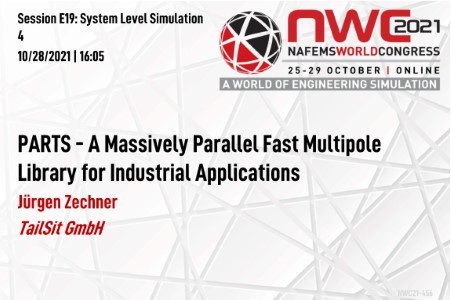
Abstract
In many engineering disciplines the use of Boundary Element Methods (BEM, or Method of Moments) poses an advantage because a volume mesh is avoided for at least some parts of the domain. For example, in problems of acoustics, electromagnetics or scattering, it can often be very cumbersome to discretise the air region. Moreover, solid parts might move with respect to each other such that tedious remeshing is required. This has led us in the past to combine the BEM with Finite Elements (FEM) to exploit the respective advantages of each method. The FEM-BEM coupling approach has been successfully applied to problems from electromagnetics. The analysis of actuators, such as magnetic valves, or the snapping of permanent magnets are examples where avoiding a volume mesh for the air region is particularly advantageous.
Unfortunately, the standard BEM has an inherent quadratic complexity similar to N-body problems: each degree of freedom directly interacts with each other. Therefore, its applicability in nowadays industrial standards is only feasible with acceleration methods which reduce the numerical effort. To this end, we have developed the software library PARTS, which is based on the Fast Multipole Method (FMM). The FMM is based on a hierarchical decomposition of the computational domain and an approximation scheme for distant interactions between clusters of degrees of freedom. A careful implementation of this method enables us to tackle BEM-based systems with linear complexity. Crucial design features of our FMM library are reusability, applicability to a wide range of problems, multi-threading and distributed memory parallelism (MPI) for large-scale applications.
In this work, we present the latest results from our FMM library. For specific use cases the scaling (speedup) in a HPC environment up to ~1000 cores is shown. Several practical examples in conjunction with LS-DYNA demonstrate the soundness of the BEM-based approach and show the wide applicability of the method.



